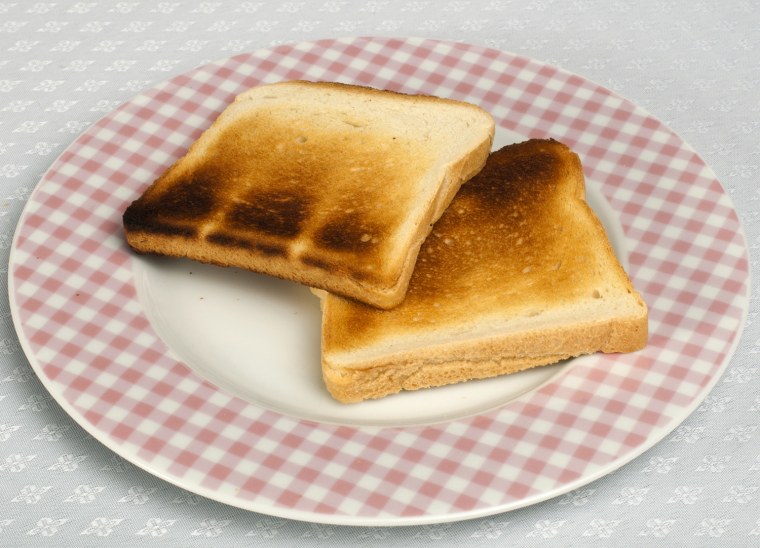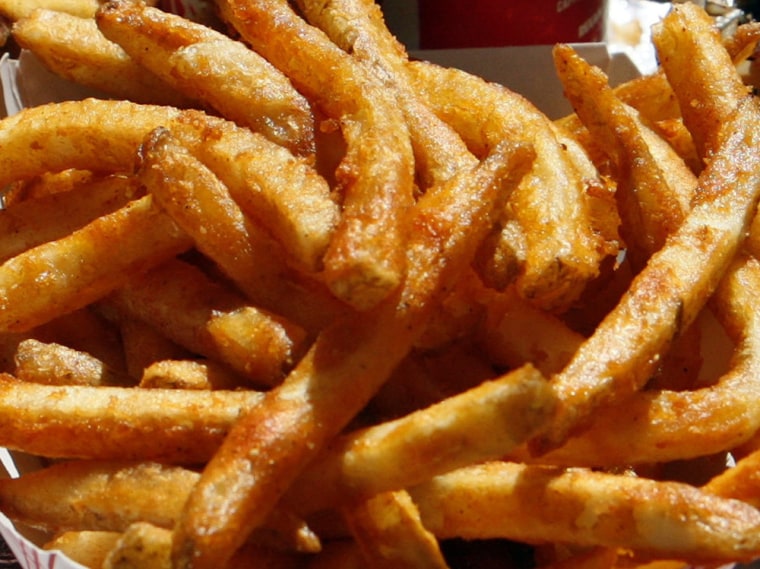Crispy french fries are the best french fries, one may (correctly) argue, but they're also more likely to contain a chemical called acrylamide, which the U.S. Food and Drug Administration reminds Thursday may be linked to increased rates of cancer.
In a consumer update posted to its website, the FDA details the reasons to consider cutting back on acrylamide, a chemical that forms naturally in plant-based foods when they are cooked at high temperatures for a long time. In other words, it's usually found in fried foods, like french fries. It's produced from a chemical reaction from the sugars and an amino acid called asparagine, which is found in many grains and vegetables. (And potatoes have a particularly high amount of it, further exacerbating the french fry problem.)
Outside of the kitchen, the chemical is used primarily for industrial purposes: producing paper, dyes and plastics and treating drinking water, wastewater and sewage.
Animal studies have shown that high levels of acrylamide are linked to an increased risk of cancer, although long-term studies have not yet been done in humans. Both the World Health Organization and the Food and Agriculture Organization call the levels of acrylamide in foods a “major concern,” and call for more research.
Scientists first found acrylamide in food in 2002, and according to the Grocery Manufacturers Association, it's found in about 40 percent of the calories consumed in a standard American diet. Frying, roasting or baking tends to produce acrylamide, but boiling or steaming foods typically do not.
Here’s a short list of some of the foods acrylamide is often found in:
- potatoes (especially roasted or fried potatoes)
- cereals
- coffee
- crackers
- breads (especially toasted bread)
- dried fruits
Today, the FDA released a draft of some practical strategies to help growers, manufacturers and food service operators lower the amount of acrylamide in their foods, accompanied by the aforementioned consumer update.
"There’s no reason to panic," says TODAY diet and health editor Madelyn Fernstrom, who says that every few years concerns about acrylamide seem to bubble to the surface. "Long-term studies need to be made, but in the meantime, just do your best to lower it. And, mostly, that’s going to be cutting down on fried foods. There’s a lot of reasons to cut back on fried foods, and this is one more."
You’ll never cut it all out, but if the thought of ingesting some scary, not very well understood chemical is making you nervous, there are some simple ways to cut back.
Cut out, or at least cut back on, fried foods. This is just a good idea, anyway, but it's an especially good idea if acrylamide makes you nervous. "If you want to make a big difference, have things that you boil or steam or eat raw," Fernstrom says.
Don’t eat crispy or burnt french fries. The FDA says overcooked, crispy or burnt french fries are the ones most likely to have higher levels of acrylamide. Go for the golden yellow fries, and avoid the brown ones.

Also, don’t eat burnt toast. Same concept here: The dark brown or black areas on a piece of toast are more likely to contain acrylamide. Toast your bread to a light brown color instead. "The best rule of thumb is just don’t cook things to death," Fernstrom says.
Potatoes don’t belong in the refrigerator. Keeping potatoes in the fridge can increase the amount of acrylamide produced during cooking, the FDA says. Instead, keep them stored in a dark, cool place, like a pantry.
You can follow TODAY.com health writer Melissa Dahl on Twitter.
